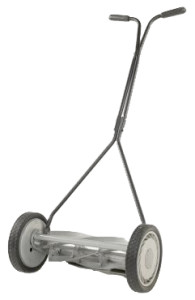
 Mowing affects all the components of turf grass quality. Density, texture, color, uniformity, and smoothness. Improper mowing can have dramatic effects on turf grass rooting, which in turn affects shoot growth and ultimately total turf quality. Weeds and diseases can be influenced by mowing as well as the turf’s tolerance to high and low temperature stress and its ability to withstand traffic can influence weeds and diseases. In other words, poor mowing practices can completely negate the best fertilizer, irrigation, or overall management program.
Mowing affects all the components of turf grass quality. Density, texture, color, uniformity, and smoothness. Improper mowing can have dramatic effects on turf grass rooting, which in turn affects shoot growth and ultimately total turf quality. Weeds and diseases can be influenced by mowing as well as the turf’s tolerance to high and low temperature stress and its ability to withstand traffic can influence weeds and diseases. In other words, poor mowing practices can completely negate the best fertilizer, irrigation, or overall management program.
Mowing Frequency
The rule of thumb is to mow frequently enough so that you are never removing more than 1/3rd of the leaf blade when mowing. This may mean mowing every 4-5 days during times of high turf growth.
Mowing Height
Mowing height is determined mainly by the type of turf species you have. The following chart is a guideline for common turf species in Oklahoma.
| Turf Type | Mowing Height |
| Common Bermudagrass | 1 – 2.5″ |
| U-3 Hybrid Bermudagrass | .75 – 2.5″ |
| Tiff Type Bermudagrass | .5 – 1.5″ |
| Zoysiagrass | .75 – 2.5″ |
| St. Augustine | 1.5 – 2.5″ |
| Tall Fescue | 2 – 3.5″ |
| Ryegrass | 1 – 2″ |
Scalping a dormant warm-season lawn is sometimes beneficial if done in early April. This involves mowing as short as possible and removing dead clippings, allowing the turf to green-up faster in the spring. Never scalp a cool-season lawn. Fescue cannot tolerate a short mowing height as bermuda grass can.
Grasscycling
Grasscycling or mulching is when clippings are left on the turf to decompose naturally. We highly recommend this practice, since it returns valuable nutrients to the soil and is better for the environment also. If there are times when you cannot keep up with mowing frequency and the grass is very high, do not leave excess clippings on the turf in this case.
Mow with a Sharp Blade
A dull blade will tear up the grass blade, giving your turf a rough appearance and increasing disease problems. Sharpen you blade several times during the season for best results.
